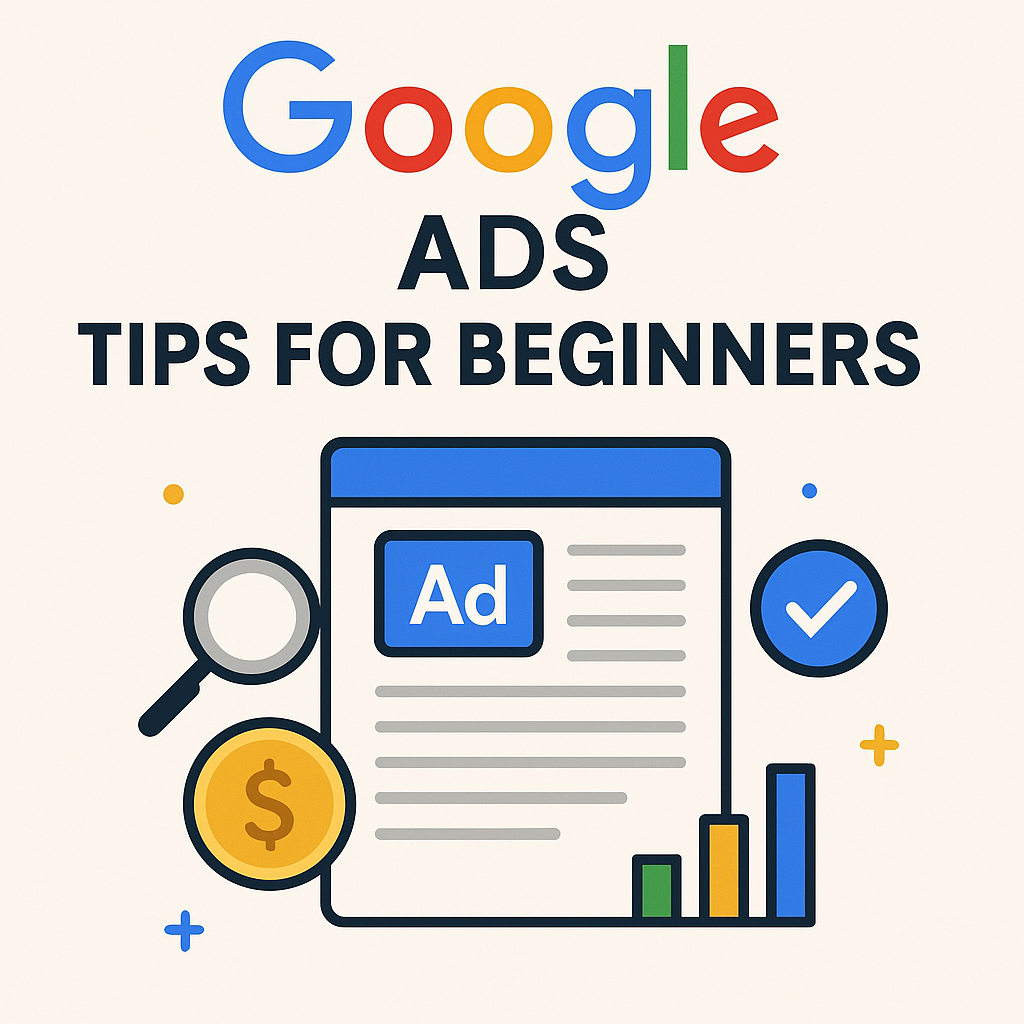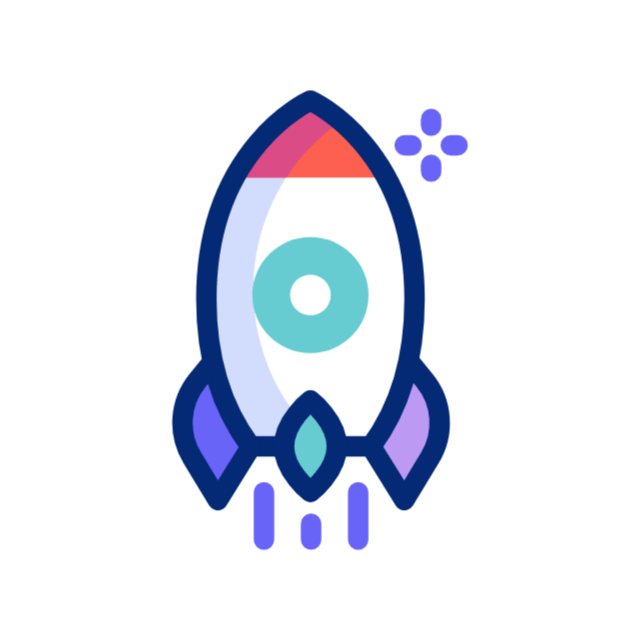
Google Ads (formerly Google AdWords) is one of the most powerful advertising platforms available today, enabling businesses to connect with their target audience through paid search results, display ads, and other forms of paid media. Whether you’re looking to increase traffic, drive conversions, or promote your brand, Google Ads can be invaluable. For beginners, navigating Google Ads can seem overwhelming, but with the right tips and strategies, you can maximize your return on investment (ROI) and drive meaningful results. This guide will provide actionable tips to help you get started with Google Ads.
1. Understand How Google Ads Works
Google Ads operates on a pay-per-click (PPC) model, meaning you only pay when someone clicks on your ad. Ads can appear on Google search results pages, YouTube, Google Display Network (GDN), and many other partner websites. Google Ads uses a bidding system where you compete with other advertisers for ad placement based on your keywords.
2. Set Clear Goals
Before you even set up your Google Ads campaign, it’s essential to define clear objectives. Are you looking to drive traffic to your website? Increase sales? Generate leads? Knowing your goals helps determine the right campaign type and structure. For example:
- Search Campaigns: Ideal for capturing user intent when people search for your products or services.
- Display Campaigns: Perfect for brand awareness, where you want to show ads to potential customers on partner websites.
- Shopping Campaigns: Best for e-commerce businesses looking to display products directly on Google Search.
3. Choose the Right Campaign Type
Google Ads offers different types of campaigns:
- Search Ads: These ads appear on Google search results pages. They are text-based ads triggered by specific keywords related to your business.
- Display Ads: These ads appear on websites that are part of the Google Display Network. They can be image or text-based and are designed for brand visibility.
- Video Ads: Displayed on YouTube and other video platforms, these ads can be skippable or non-skippable.
- Shopping Ads: Perfect for e-commerce businesses, these ads showcase product images, titles, and prices directly on Google Search.
- App Ads: Focused on promoting mobile apps, these ads appear across various platforms, including Google Search, Google Play, YouTube, and GDN.
Understanding the different types of campaigns allows you to choose the right one based on your marketing goals.
4. Conduct Thorough Keyword Research
Keywords are the backbone of any successful Google Ads campaign. Thorough keyword research helps ensure your ads are shown to people who are actively searching for products or services like yours.
- Use Google Keyword Planner: Google’s free tool allows you to find keywords that are relevant to your business. You can enter a topic or website URL to generate keyword ideas.
- Focus on Long-Tail Keywords: Long-tail keywords are more specific phrases that typically have lower competition and a higher conversion rate. For example, instead of just “shoes,” consider “comfortable running shoes for women.”
- Use Negative Keywords: Negative keywords are terms for which you do not want your ads to appear. This helps eliminate irrelevant traffic and reduce wasted ad spend.
5. Optimize Ad Copy
Your ad copy needs to grab attention and clearly communicate your value proposition. The best ad copy is concise, relevant, and persuasive. Here are some tips for writing effective ad copy:
- Use Actionable Language: Encourage users to take immediate action, such as “Shop Now,” “Sign Up Today,” or “Learn More.”
- Highlight Your Unique Selling Proposition (USP): What makes your product or service different from the competition? Make sure this is clear in your ad.
- Include Relevant Keywords: Use your targeted keywords in your ad copy to improve ad relevance and Quality Score.
- Use Ad Extensions: Ad extensions provide additional information about your business, such as phone numbers, site links, and location information. This can improve your click-through rate (CTR).
6. Use A/B Testing
A/B testing is the process of comparing two versions of an ad or landing page to see which one performs better. It’s essential for optimizing your campaigns and improving overall performance. Test different elements like:
- Headlines
- Call-to-action (CTA)
- Ad copy
- Landing page design
By continuously testing and tweaking your ads, you can ensure that you’re getting the best possible performance from your campaigns.
7. Set a Realistic Budget
Setting the right budget is crucial to ensure you’re getting the most out of your ad spend. Google Ads allows you to control your daily and monthly budget, so you don’t overspend. Here’s how to approach budgeting:
- Start Small: If you’re new to Google Ads, begin with a modest budget to test the waters. Monitor the performance and adjust accordingly.
- Allocate Budget Based on Goals: If your goal is to increase sales, you may want to allocate more budget to campaigns that generate the highest ROI.
- Use Bid Strategies: Google Ads offers automated bidding strategies like Target CPA (Cost Per Acquisition) or Target ROAS (Return on Ad Spend) to help you manage your budget more efficiently.
8. Optimize Landing Pages
Your landing page is where users are directed after clicking on your ad. An optimized landing page can significantly improve your Quality Score, lower your cost per click (CPC), and increase your conversion rate.
Here are some best practices for optimizing landing pages:
- Ensure Relevance: The content on your landing page should be directly related to the ad users clicked on. If you’re advertising shoes, for example, the landing page should feature shoes and relevant information, not just a generic homepage.
- Create Clear CTAs: Make it easy for users to take the desired action, whether it’s making a purchase, signing up for a newsletter, or filling out a contact form.
- Optimize for Mobile: Many users browse and shop on mobile devices. Ensure that your landing page is mobile-friendly and loads quickly.
9. Monitor Campaign Performance
Once your campaigns are live, it’s essential to regularly monitor their performance. Google Ads provides a wealth of data, including impressions, clicks, CTR, conversion rates, and more. Track these key metrics to see how well your campaigns are performing:
- CTR (Click-Through Rate): The percentage of people who clicked on your ad after seeing it. A high CTR typically means your ads are relevant and engaging.
- CPC (Cost Per Click): How much you’re paying for each click on your ad. Keep an eye on your CPC to ensure your budget is being spent efficiently.
- Quality Score: Google’s rating of the relevance of your ads, keywords, and landing pages. A higher Quality Score can lower your CPC and improve ad placement.
10. Adjust and Refine Campaigns
Google Ads is not a set-and-forget platform. To achieve long-term success, you must continuously adjust and refine your campaigns based on performance data. Here are a few ways to make adjustments:
- Pause Underperforming Ads: If certain ads or keywords aren’t performing well, pause them and reallocate your budget to the better-performing ones.
- Expand Keyword Lists: If your ads are performing well, consider expanding your keyword list to reach a broader audience.
- Test New Ad Copy: Always keep your ad copy fresh and experiment with different messages to see what resonates best with your audience.
11. Learn from Analytics
Google Analytics and Google Ads can work together to provide detailed insights into user behavior on your website. Use these tools to track how visitors interact with your site after clicking on an ad. For example, if your ads are driving traffic but not conversions, you may need to optimize your landing pages or adjust your bidding strategy.
12. Keep Learning
Google Ads is a complex platform with many advanced features. As you gain more experience, continue to explore new tools and strategies to improve your campaigns. Google provides extensive educational resources, including the Google Ads Help Center, Google Ads YouTube Channel, and the Google Ads Academy.
Conclusion
Google Ads is an incredibly effective platform for businesses looking to drive traffic, generate leads, and increase sales. However, it’s essential to approach it with a well-thought-out strategy. By following these beginner tips and continuously testing and optimizing your campaigns, you can create highly effective ads that deliver tangible results.

